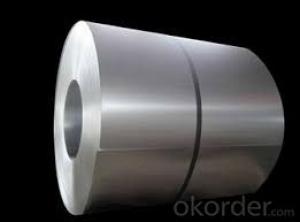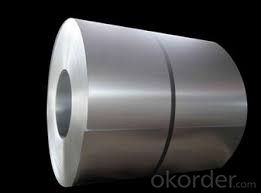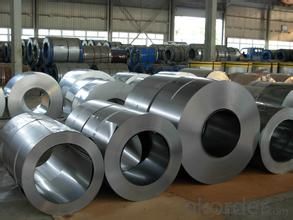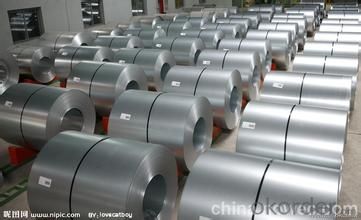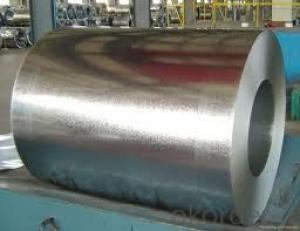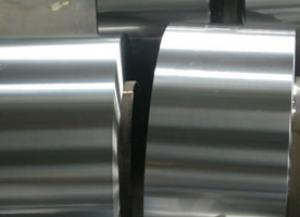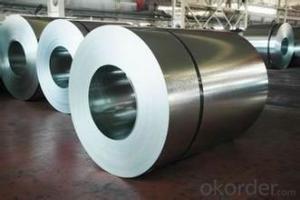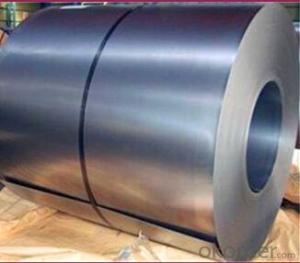cold rolled steel coil / sheet / plateSPCE
- Loading Port:
- Tianjin
- Payment Terms:
- TT OR LC
- Min Order Qty:
- 30 m.t.
- Supply Capability:
- 5000000 m.t./month
OKorder Service Pledge
OKorder Financial Service
You Might Also Like
Description:
The raw material of cold rolled steel coil/sheet is high quality hot rolled product, and after pickling, kinds of new technology and new process of global cold rolling production have been applied. Therefore the manufacturing, home appliance, automobile etc.
Specification:
COLD ROLLED STEEL | |
Thicknenss | 0.10mm-4.00mm |
Width | 600mm-2000mm |
Sheets length | 1200-6000mm |
Coil inner diameter | 508-610mm |
Surface treatement | matt finish/bright finish,oiling/dry, bright anneal/black anneal |
Coil weight | 3-5t |
Application:
1. Refrigerators, cabinets, power distribution baords and drums.
2. Automobile floor and roof panels.
3. Automobile fenders and quarter panels
4. Automobile fenders and quarter panels
Images:
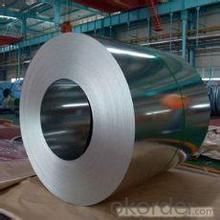
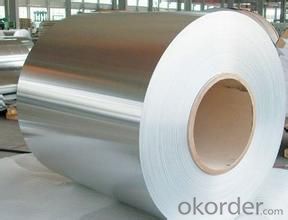
Our products enjoy an excellent reputation and have been exported to Europe, South-America, the Middle-East, Southeast-Asia, Africa and Russia etc.. We sincerely hope to establish good and long-term business relationship with your esteemed company.
FAQ
1. Do you have QC team?
Yeah, sure, our QC team is very important, they will keep the quality control for our products.for quality inspection every day.
- Q: Can steel coils be used in the production of agricultural equipment?
- Yes, steel coils can be used in the production of agricultural equipment. Steel is a commonly used material in the manufacturing of agricultural machinery such as tractors, plows, harvesters, and irrigation systems. Steel coils can be formed, cut, and shaped to create various components and structures required for these equipment. The strength, durability, and corrosion resistance of steel make it suitable for withstanding the harsh conditions and heavy workloads involved in agricultural operations.
- Q: In construction, what types of stress require steel to be placed in footings?
- Steel is always added to concrete to handle local 'tension' stresses. (Sometimes to provide extra compression in 'pre-stressed' applications, but the steel is still in tension.) Steel would be added to the lower section of footings to stiffen them to 'bridge' local 'soft spots' in the substrate.
- Q: 7850kg/cu.m density is typical for all type of steel? like reibar, I- beam and so on
- 90% of the steels used today are plain mild carbon steels consisting of iron with less than 1% carbon content and as such have a density of about 7750 kg/cubic meter. Some special steels which have a significant percentage of alloying elements such as chrome or manganese or other elements will have greater density bringing the steel up to about 8000 kg / cubic meter. There are a greater many factors influencing the exact density of a steel. Even for steels of exactly the same content of iron , carbon and other alloying elements, there may be a difference ( very small mind you ) in density due to work hardening. The difference in this case is due to movement of dislocations which become locked in the grain boundaries and this forms a more dense crystal structure. For this same reason, the theoretical density of steel (which does not take into account dislocations) is greater than the measured density of steel.
- Q: which metals have a higher density than steel? and how does the density compare to steel( example: tungsten carbide is 2x [i think] more dense than steel.)
- This Site Might Help You. RE: what metals are more dense than steel? which metals have a higher density than steel? and how does the density compare to steel( example: tungsten carbide is 2x [i think] more dense than steel.)
- Q: What are the challenges faced in the recycling of steel coils?
- There are several challenges faced in the recycling of steel coils. Firstly, one of the main challenges is the collection and sorting process. Steel coils are often used in large-scale industries and construction projects, making it difficult to collect and transport them for recycling. Additionally, steel coils may be mixed with other materials, such as plastic or wood, which further complicates the sorting process. Another challenge is the size and weight of steel coils. Steel is a heavy material, and coils can be quite large, making it challenging to handle and process them efficiently. Specialized equipment and machinery may be required to move and separate the coils, which can add to the cost and complexity of the recycling process. Furthermore, the quality of steel coils can vary, which can impact their recyclability. Steel coils may have impurities or contaminants, such as oil or paint, which need to be removed before recycling. These impurities can affect the quality and integrity of the recycled steel, making it less desirable for certain applications. Additionally, the energy and resources required for recycling steel coils is a challenge. The recycling process involves melting down the steel, which requires a significant amount of energy. Furthermore, the transportation and processing of steel coils also consume resources and contribute to carbon emissions, making the recycling process less environmentally friendly. Lastly, the market demand for recycled steel coils can fluctuate, which can impact the viability of the recycling industry. The demand for steel products can vary depending on economic conditions and industry trends. This can make it difficult for recyclers to find buyers for their recycled steel coils, potentially leading to stockpiling or disposal challenges. Overall, while recycling steel coils offers environmental benefits and conservation of resources, there are several challenges that need to be addressed to ensure its successful implementation. These challenges include collection and sorting, handling and processing, quality control, energy and resource consumption, as well as market demand.
- Q: Don't ask me why, but I took my stainless steel ring and I heated it up with my gas stove. I stuck it in there til the metal turned red, and the flame which is normally blue turned orange for some reason when the metal turned red. Anyway, afterwards i cooled it off in water and now it's all discolored and it feels different. It's weighs less and it doesn't feel the same. Plus, it's ugly cause it's all black and blue. What happened? Someone help
- My fiancé got a Tungsten wedding band. It's super tough and doesn't scratch. We made sure to get an extended warranty, because those rings can't be resized and otherwise we'd have to pay for a new one. We were thinking about titanium, but it's really light and he just didn't like the feel of it. The tungsten was heavy and felt durable and manly. He also loves the color, it's darker than silver so it looks non traditional. Make sure to get a ring with a curved band for comfort, or he may not like wearing it. Platinum actually scratches easily, so don't even think of it! My fiancé's wedding band was about $250, a bit more with the warranty. Stainless steel will be cheaper, but it's not as durable or scratch resistant as tungsten.
- Q: We bought a new fridge and the magnets don't stick to the front where the stainless steel is.
- The stainless steel which dont exhibit magnetic properties are austenitic grades of steel.
- Q: Can anyone tell me what that means. I have seen it on knife blades an such. I am assuming it's a formula for the strength of the metal. who does that scale work, and please keep it simple.
- The number just indicates which class of steel alloy it belongs. Yours happens to be a 400 series and happens to have no Nickel in it (440 Steel) and a higher amount of carbon (Nickel is very common in steel) When I say alloy, I'm referring to the different chemical formulas and processing of steel which vary for different uses like industrial use, medical use or decorative use. Think of the different alloys like the types of soft drinks out there. Coke, Pepsi and Dr. Pepper. They all have very similar chemical formulas; yet differ with their secret ingredients which is apparent in the taste.
- Q: What are the key properties of steel coils?
- The key properties of steel coils include their strength, durability, and flexibility. Steel coils are known for their high tensile strength, making them suitable for various applications that require load-bearing capacity. They also exhibit excellent durability, resisting wear, corrosion, and damage over time. Additionally, steel coils are highly flexible, allowing for easy shaping and forming into different structures or products.
- Q: I love the design! It looks great, is safe, and you can see through it just fine on camera. Do you like it?BQ: Old Blue WWF Steel Cage or the newer fence type steel cage?
- yes it is better now
Send your message to us
cold rolled steel coil / sheet / plateSPCE
- Loading Port:
- Tianjin
- Payment Terms:
- TT OR LC
- Min Order Qty:
- 30 m.t.
- Supply Capability:
- 5000000 m.t./month
OKorder Service Pledge
OKorder Financial Service
Similar products
Hot products
Hot Searches
Related keywords
